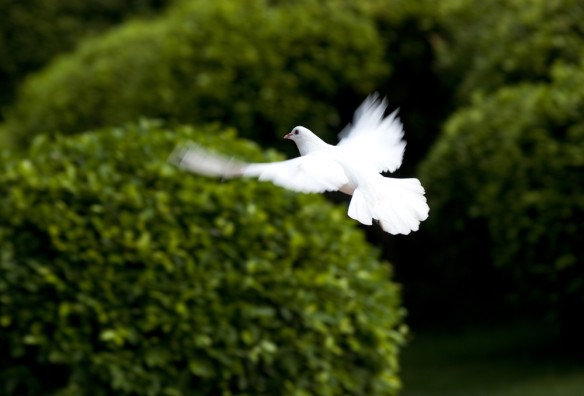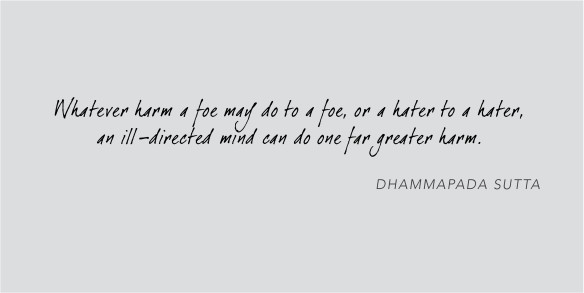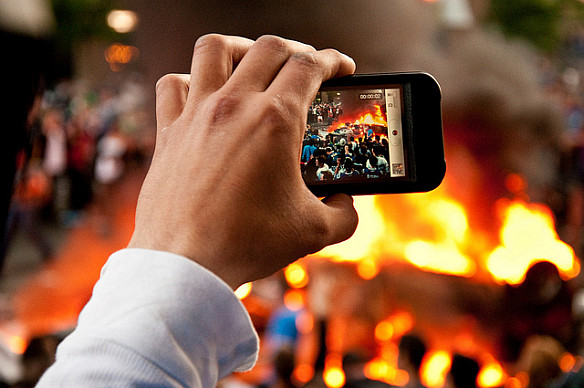Youth, without much self-reflection, certainly feels the fluidity and markless flow of emotions, thoughts and overwhelming stimuli, and has reacted with various defensive postures from back-to-the-land movements to in-your-face hedonism.
Looking at the contemporary world with all its challenges and possibilities, I am reminded of Nietzsche and his admonishment of modern mankind’s quest for freedom through self-overcoming. Maybe it’s Nietzsche that has the most useful insights for us in understanding late-capitalist youth. Youth, without much self-reflection, certainly feels the fluidity and markless flow of emotions, thoughts and overwhelming stimuli, and has reacted with various defensive postures from back-to-the-land movements to in-your-face hedonism. There is a nostalgia for a certain lost Utopian simplicity and relational stability that was imagined and longed for but often unrealized in childhood. The tension between a wistfulness for stability and the existential reality marked by personal emotional turmoil has led to a series of profound ambiguities and dialectical clashes that form the narrative identities of late-capitalist youth.
The structure of “truth” used by the majority culture contained a madness… in which there was little relation between our accepted cultural ideology and the reality of direct human experience.
Nietzsche has much to say to our epoch, since he was describing the essential contradictions between late 19th century modernism and the traditional society out of which it emerged. That society was lost, as well, because it was trapped in old paradigms and structures that did not fit the technology and economic conditions of late l9th century industrialization and capitalism. The structure of “truth” used by the majority culture contained a madness, very much like our current madness, in which there was little relation between our accepted cultural ideology and the reality of direct human experience. The only way to sanity was though recognizing the madness and heroically becoming mad, in the service of freedom and the future existence of mankind. Read More …

Today I sat before the cliff,
sat a long time till mists had cleared.
A single thread, the clear stream runs cold;
a thousand yards the green peaks lift their heads.
We just posted a new slide show featuring the majestic mountains of Canada and a poem by Cold Mountain (寒山), which was masterfully translated by Red Pine (Bill Porter). Mr. Porter was kind enough to provide reprint permission. The beautiful photos were taken by talented photographer Victor Wong. Check out the slide show!

[Admin’s note: This is part 2 of 2 from Lauren’s reflections on the 7-day Guan Yin retreat. During the Guan Yin session, participants recite the name of Guan Yin Bodhisattva. In our Chan tradition, meditation brings the mind back to whatever method of practice we are doing, whether it’s mental awareness, reciting, bowing, etc… Inevitably, the mind wanders off, and we gently bring it back. Once familiar with the motion of wandering off, we see what compels the mind to stray and develop a resistance against the habituation of that emotion.]
But I wonder if the foreignness of Buddhism in a Chinese cultural context will inhibit the average American from studying the Dharma and cultivating.
This past year I have participated in and have benefitted from a number of DRBA/DRBU sessions. Learning to develop mindfulness has had a profound effect on transforming my life. The practices set up by Master Hua, based on thousands of years of Eastern tradition, are very precious and carry the extraordinary potential of helping living beings learn how to end their suffering. But I wonder if the foreignness of Buddhism in a Chinese cultural context will inhibit the average American from studying the Dharma and cultivating. When Buddhism was first introduced to China, the Indian monks and early Chinese converts worked tirelessly to translate the Dharma into Chinese so that ordinary people could contemplate the Way. As a Sanskritist, I am curious—what did the ceremonies sound like in Indian languages? Were the ceremonies translated from Indian languages into Chinese, or were they made up by Chinese practitioners? Thinking about this question helps me to envision what an American ceremony might sound like. Having ceremonies in the local spoken language will enable suffering beings in that culture to connect with the Dharma. Read More …
“Except that it robs you of who you are,
What can you say about speech?
Inconceivable to live without
And impossible to live with,
Speech diminishes you.
Speak with a wise man, there’ll be
Much to learn; speak with a fool,
All you get is prattle.
Strike a half-empty pot, and it’ll make
A loud sound; strike one that is full,
Says Kabir, and hear the silence.”
-Kabir, translated from Hindi by Arvind Krishna Mehrotra
“Language and speech require a mix of various sounds
In order to form words and sentences expressing meanings.
But words and phrases can’t express all meanings; how could sounds
Guide beings toward a breakthrough to enlightenment?”
– Manjusri, Shurangama Sutra, translated from Chinese by Buddhist Text Translation Society
We probably all had the experience of trying to explain something—an event, an object, a reflection—to others when language and words don’t quite do justice and fail to reenact the full richness of the live object or event Read More …

Join us for Orientation 2011, an introduction to the upcoming academic year. Learn about what’s new at DRBU. Connect with your professors and colleagues. Share your summer experiences. Dharma Master Heng Chih will open the session with a keynote address. Hear about the newest developments in DRBU degree and short-term programs. Enjoy school spirit, refreshments and a special DRBU surprise!
We welcome everyone who is interested in taking DRBU classes or simply wants to learn more about our offerings. This event is mandatory for all DRBU degree students. Read More …
[Admin’s note: This is part 1 of 2 from Lauren’s reflections on the 7-day Guan Yin retreat. During the Guan Yin session, participants recite the name of Guan Yin Bodhisattva. In our Chan tradition, meditation brings the mind back to whatever method of practice we are doing, whether it’s mental awareness, reciting, bowing, etc… Inevitably, the mind wanders off, and we gently bring it back. Once familiar with the motion of wandering off, we see what compels the mind to stray and develop a resistance against the habituation of that emotion.]
On the first day of the Guan Yin session, my mind was scattered, unsettled about leaving my home in the middle of two summer school classes, still caught up in thinking about the Fulbright application that I should have been working on, where I would live next year, and what I would teach in the fall. I did not feel at ease in the afternoon, but rather conflicted. Already a flood of powerful emotions had arisen and out of nowhere I began to cry. All evening and into the next morning, even though I could not identify the cause, I could not stop the tears from welling up.
For a moment I forgot my grief and laughed out loud: this bird looked so ridiculous, so stupid slipping on the smooth floor in the classroom, scared, not knowing how to escape.
When I walked into the university building for evening lecture, I heard the sound of a bird crying. Following the despairing voice, I found a large bird the size of a peahen but with a red neck trapped in one of the classrooms. For a moment I forgot my grief and laughed out loud: this bird looked so ridiculous, so stupid slipping on the smooth floor in the classroom, scared, not knowing how to escape. I opened the door to the outside and stepped toward the bird to usher him toward the door. The frightened bird flew up, hitting the ceiling before heading toward the light and bumping into a closed window. His will for liberation was so strong that that bird gave no thought to the risk, but instead pushed with all his might, completely fearless of the pain, and broke through the window. Glass shattered and the bird was free. Read More …

On May 2, 2011, thousands of Americans poured into the streets of New York and Washington, DC dancing and cheering. What was their cause for celebration? They were rejoicing and celebrating at the news of the death of Osama bin Laden (McKellogg 2011).
President Obama, in his address to the Nation that day, said, “…this is a good and historic day for both of our nations.”
As I reflected upon hearing this news, I had these few thoughts…. Regardless of how heinous a person may be, should we ever rejoice in his/her death?
As I reflected upon hearing this news, I had these few thoughts. When does the death of another human being or even another living creature deserve celebration? Is it really a “good day” when we hear of someone’s death? Regardless of how heinous a person may be, should we ever rejoice in his/her death?
It is undeniable that Osama bin Laden was responsible for the death of many innocent Americans with the attack of the World Trade Center on September 11, 2001. He caused much pain and suffering for the 9/11 survivors and the relatives of the deceased, and it is only natural that they will have thoughts of anger, hatred, and ill-will towards him. However natural these emotions may be, we should recognize that these emotions are most destructive and harmful, not to Osama bin Laden, but to oneself. Read More …
 SHARE
SHARE EMAIL
EMAIL COMMENT4 comments
COMMENT4 comments 







